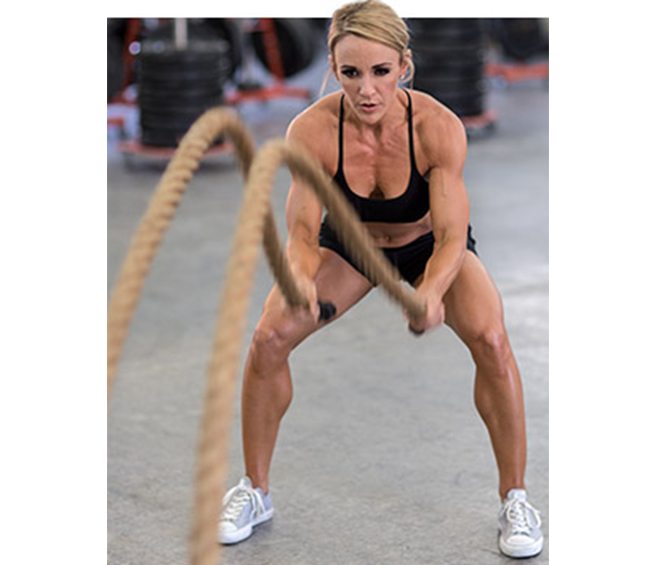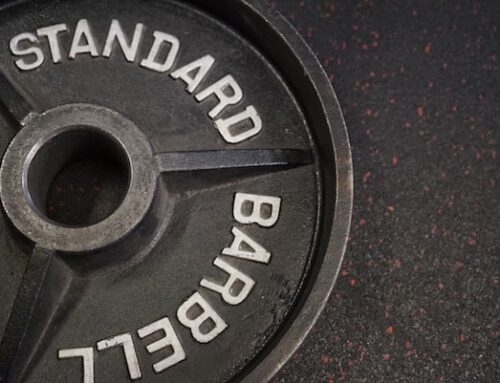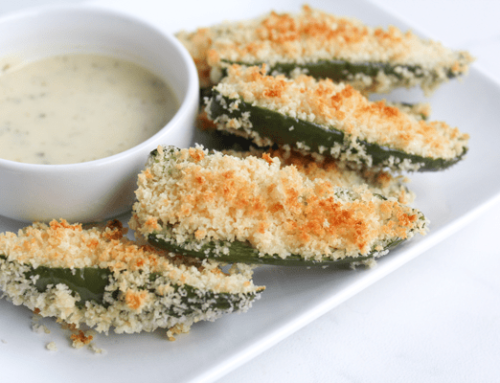You’re all warmed up and hop on the treadmill to start your HIIT cardio session. You move the treadmill speed up to a moderately challenging level and, when you’re ready, jump onto the spinning belt for a 15-second sprint. Desperately watching the seconds tick by (never have there been slower seconds!), you jump your feet back to the sides of the spinning belt for a 30-45 second rest period before your next sprint. Repeat that 10 times and you’re done! Right? So, is that considered HIIT?
Sorry to disappoint, but not exactly. You’re on the right track…but you need to kick it up a notch in order to achieve all of the awesome benefits from HIIT.
I go into major detail on the basics of HIIT training, how to push yourself, how to calculate your heart rate percentages and how your body uses HIIT to burn fat in this article (High Intensity Interval Training). Today, I want to teach you HOW to build yourself up to the correct intensity level of HIIT. Doing so will help you maintain and build muscle while forcing your body to oxidize (burn) fat and recruit your fast-twitch muscle fibers to help build muscle and make them stronger!
Pick Your Equipment
To keep it simple, I like to choose from three different HIIT options when I’m at the gym – the treadmill, a spin bikeor the prowler on the turf. I choose these, because I like to add a muscle-building element to all of my HIIT training. I use the incline feature on the treadmill to create incline sprints, the resistance on the spin bike and I weight up the prowler if I’m doing turf sprints. This is what works for me. I’ve been doing HIIT for years, so I have become too efficient at trying to get my heart rate to raise on flat ground or with a piece of equipment that doesn’t allow for any resistance.\r\n\r\nIf you don’t have access to a gym – or if it’s beautiful outside – instead of running sprints on flat ground…go find a moderate hill that allows you to sprint up it for at least 20 seconds (more seconds if the hill isn’t very steep).
The Key To Making HIIT Work For You
It’s all about your intensity level. That’s it! If you perform a sprint and can start back up again 30 seconds later…you didn’t work hard enough. True HIIT causes enough fatigue that it is literally IMPOSSIBLE for you to start another sprint within 30 seconds. If your intensity level is where it needs to be for HIIT to work, you will NEED 45-100 seconds of rest before starting the next interval.
The point of HIIT is heart rate training. If you get your heart rate up with a sprint interval, rest for a few seconds and then start another sprint while your heart rate is still elevated, you are not performing HIIT. You need a super-intense working interval, followed by a rest interval long enough to get your heart rate back down to around 70% of its max before you can start your next working interval. This recovery period usually ends up being between 45-100 seconds, depending on the individual and the intensity (time & heart rate) of your working interval.
Everyone Is Different
It takes a lot of time and consistency with HIIT to become efficient at it. Like I mentioned, I have been doing it for years and can still get the same level of intensity that I did as a beginner, but I need to add weight, incline and time in order to achieve that. If I were to just walk out my front door and start HIIT sprints on my flat street, my working interval (the sprint) would be longer than my street, because it would take me so long to get my heart rate to its max without any incline or resistance. But, if you are a beginner, this flat sprint would most likely work great!
Your heart rate monitor is VERY important, as it’s how you’ll know you reached your heart rate max during your working interval and how you’ll know how long to rest (get your heart rate down to 70%).
Try some different equipment, inclines and resistance and see what works for you.
Here is a sample HIIT workout that I would perform three times per week:
For my weighted prowler sprint workout on the turf,







Leave A Comment
You must be logged in to post a comment.